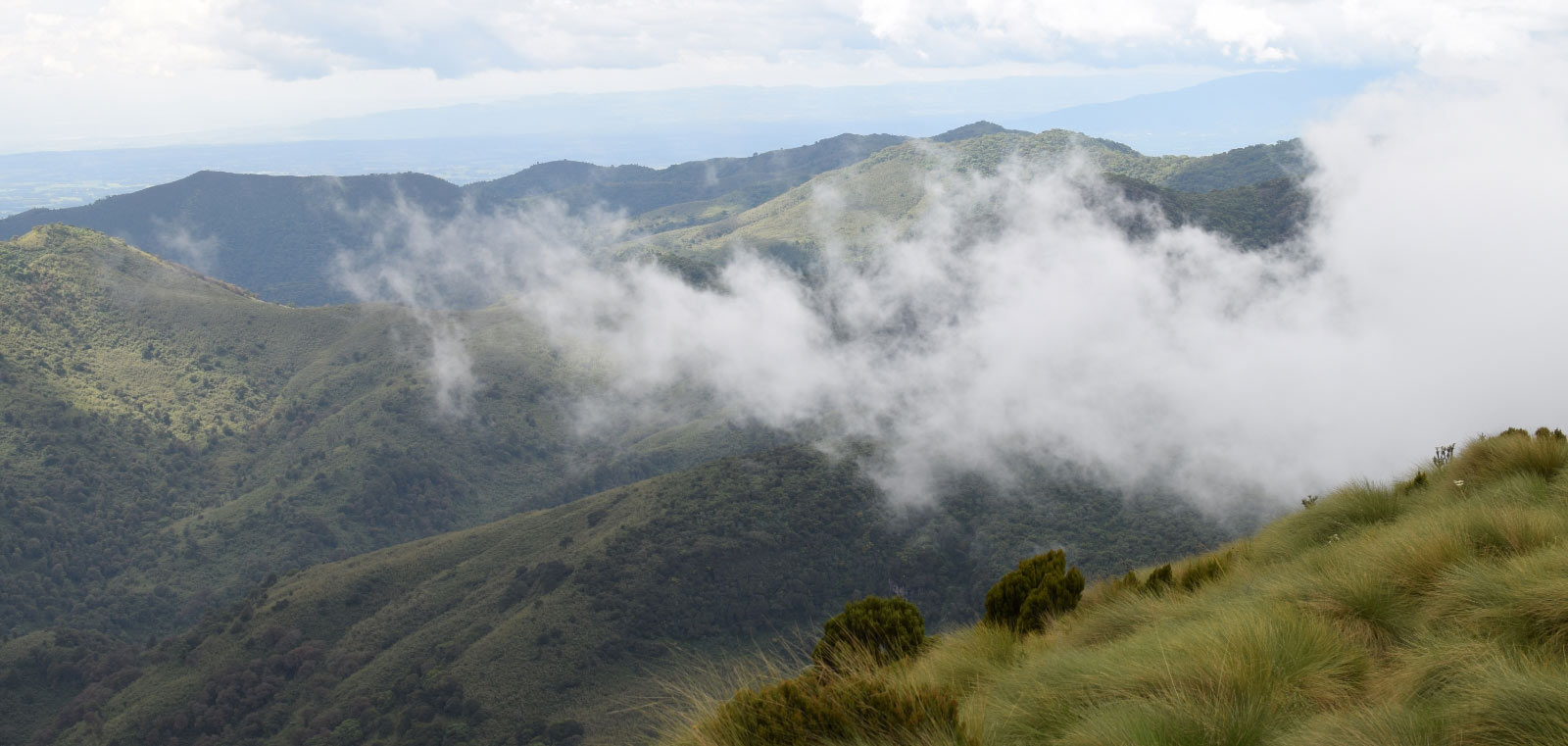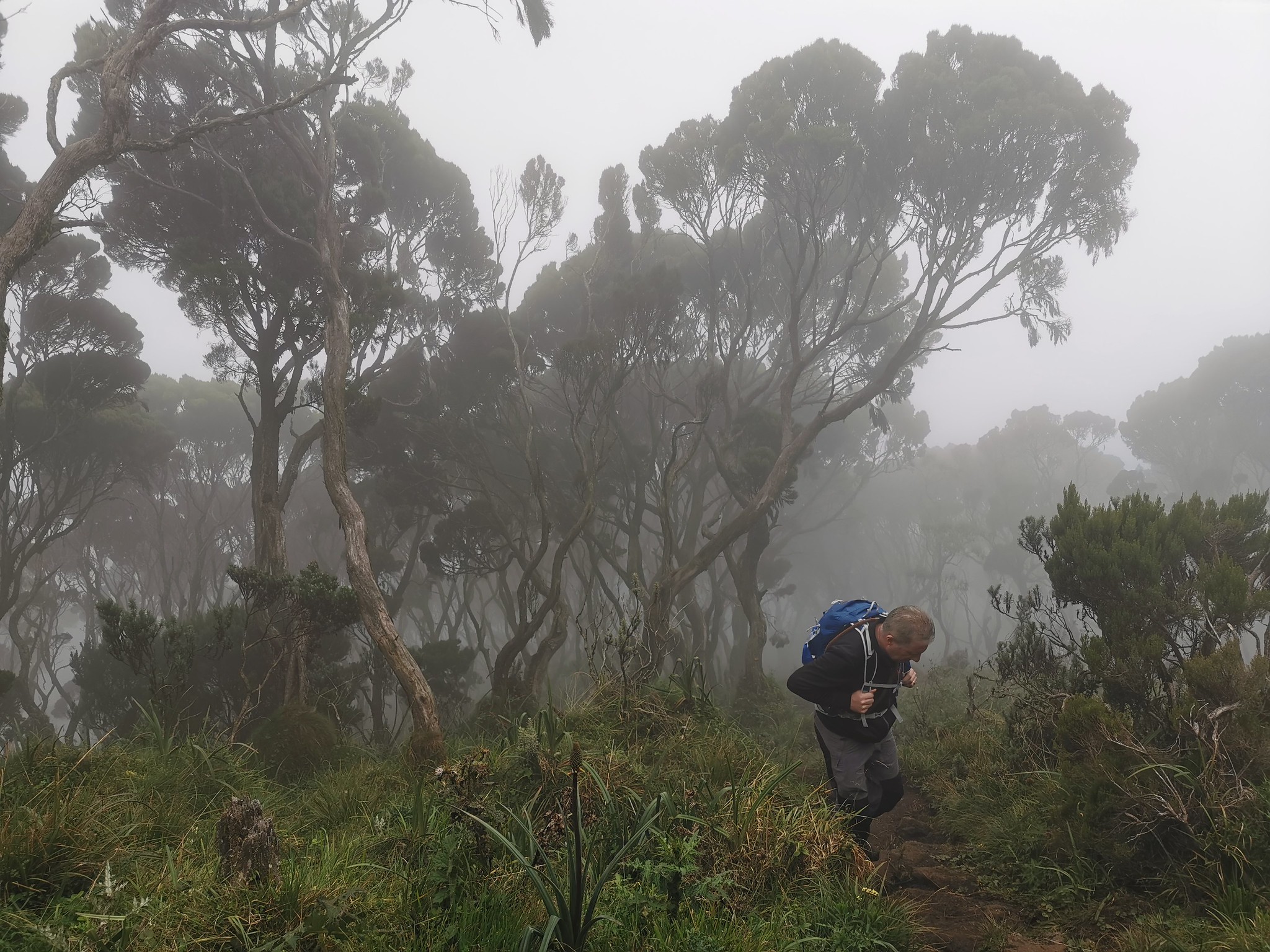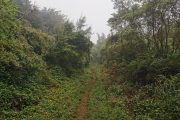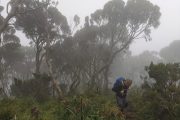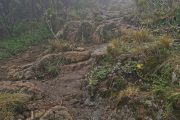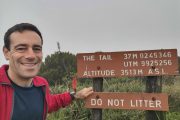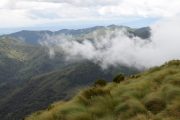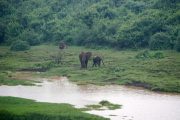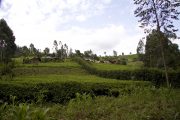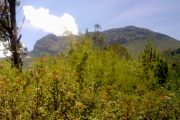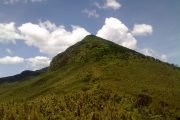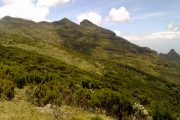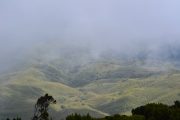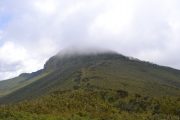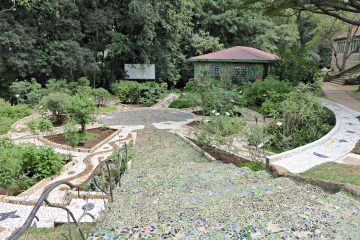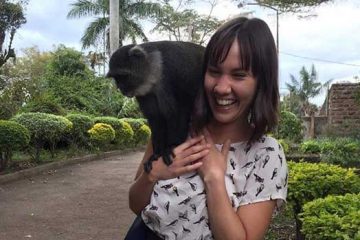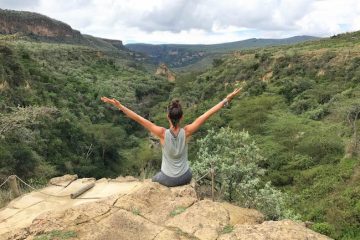As you trudge up the ever steeper road, the small pathway, broken every few feet by dangerous mud, is now enveloped by a canopy of towering bamboo, with only filtered light passing through. The odd elephant footprint and droppings from other animal species serve as a continuous reminder that you’re in a game reserve rich with wildlife, with the armed escort serving as your only line of defense against potential danger.
The route gradually levels off and the Bamboo thins out as you reach the alpine zone, which is marked by a spectacular assortment of bizarre flora such as Giant Lobelia, Senecio, Tussock Grass, and Giant Heather, among others; a genuine feast for botany fans. Those that make it this far will be rewarded with breathtaking vistas of the surrounding landscape, including the local Sasumua Dam to your right and the distant Ndakaini Dam to your left. You’ve arrived to the point of despair, commonly known as the elephant’s rump.
The rest of the journey is through somewhat rocky terrain at a height of almost 3400m above sea level, with the temperature falling dramatically as you make your way across the elephant’s back for those who are strong enough to continue. The route descends through a dense grove of trees before ascending out of the little valley. It soon becomes rather steep as it meanders through gnarled gigantic heather trees draped in Spanish moss, which provide handholds when you need to pull yourself up the slope. After what seems like an unending climb, the route finally levels off, allowing you to glimpse the top for the first time. The saddle between two knolls can help you find it.
You can climb one of the two summits in 5 minutes after traversing the Elephant’s back to reach this saddle. The 3625m high peak is preferred by most hikers, however the left one is higher at 3630m above sea level. To the north, the remarkable Kinangop peak, the Aberdares’ second highest point, may be seen.
When you are within 15-20 minutes of reaching the peak, the KWS rangers may try to persuade you not to go. They’ll offer you excuses like the weather may turn bad or the terrain is terribly hazardous. If you have your heart set on getting there, kindly insist on going forward and prevent later regretting turning back after being so near.
The descent is just as difficult as the ascent, putting a toll on the knees and adding another 3 to 4 hours to the time it takes to reach the Forest station.
Related

